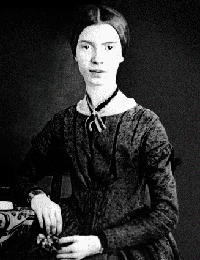Last
Wednesday we were introduced to the
poems “horse” by Gloria Anzaldua as well as Countee Cullen’s “Incident”. Both
poems are highly influenced by mixed culture in America (“horse’s” on American
and Chicanos or Mexican while “Incident’s” on African American and the white
people).
So here’s a short biography of Countee
Cullen:
Countee Cullen, an African-American
poet was born on May 30, 1903 in New York City. He was also a playwright,
activist, and educator who was a major figure in the Harlem Renaissance, the
African-American arts and cultural movement that crossed the 1920s. He began
writing poetry at the early age of fourteen. After entering New York University
in 1922, his poems started to get published in The Crisis, a magazine of the
National Urban League. Later the Century Magazine, Harper’s and Poetry also
gave him a spot in publishing poems. His poem, “Ballad of the Brown Girl” made him won several awards and he even
graduated from New York University in 1923, the same year he published his
first volume, “Color” in which the
poem “Incident” was included. After
that, he completed his master degree in Harvard University.
While writing this entry, I found an
interesting fact about his background; he was
raised and educated in a primarily white community and that’s what makes him
differed from other poets of the Harlem Renaissance like Langston Hughes. He wanted to speak to all Americans, not just to the
ones who looked like him.
His second volume, “Copper Sun (1927)” collides with controversy in the black community
since he did not give much attention to the race issues as much as he did in Color. Countee Cullen died on January 9,
1946.
In his poem Incident, Cullen managed
to bring out a racism incident that happened to (probably, and I’m pretty sure
it was his very own personal incident) him when he was a child. The first
impression I got from the poem was “RUDE!” when it gets to the “Nigger”
syllable. Incident somehow can be
read as happening at the first stanza then innocent, sad and of course, a taste
of racial prejudice as it may sound.
Speaking of prejudice, I believe
people at some point in their life had the experience of it. To be honest, the
feeling was horrible and I myself faced the experience big time. In “Incident”,
Countee Cullen tackles the issue of racial prejudice. Even though the poem was
written almost 100 years ago, it still manages to ring true today.
In my case it is almost similar to
Cullen’s experience. I was born and raised in Machang, Kelantan. In school, my deep
interest in English had made me a bit different from other kids or even in my
own family because in Kelantan, the kids were not quite fond of English lessons
and some of them learned English simply for the sake of grade. I read English novels,
write birthday cards in English, listen to good English music (so I can
practice more on my listening skill and also for the fun of it), watch English
movies, speak in English outside of classroom with my best friend and the list
goes on. For them it seemed as I was trying to be one of the Westerners. What they
did not get was I had passion in learning English for the beauty of learning it, not
becoming one of the people. As a consequence, they out thrown me and saying
things like, “Oh, she speaks English. What a show off!”.
Another experience of mine is also
coming from the fact that I’m a Kelantanese, a place called “rural,
conservative, where close-minded people live in”. When I got a letter calling
for PLKN service in 2010, I knew it was going to be my chance to expand my
circle of friends. And so I did without telling them where exactly I came from.
But of all the memories I built in PLKN, I remember one the most: a so-called friend
from other state in Malaysia said to me, “no wonder you’re so weird. You’re
from Kelantan.” There are plenty of other experiences as I grew up and that has changed who I am today and I’m thankful to be able to
experience all that because if I would not, I will never grow up and speak
against racial prejudice or any kind of prejudices.
Ref: "Countee Cullen." Poets.org.
Academy of American Poets, n.d. Web. 24 Sept. 2014.









